National Trust vs English Heritage: Which Membership to Buy
If you are based in the UK and want to explore more historical sites, you might be wondering National Trust vs English Heritage – which is better?
Both of these heritage organisations celebrate Britain’s history, and membership at either gives you the chance to visit their sites free of charge.
You could purchase both memberships, as there are some key differences. But if you only want to buy one, which is better?
We will answer this question in this blog post! You’ll learn which is better value, which is best if you like historic houses and which one to choose if you’re interested in nature.
National Trust vs English Heritage Summary
National Trust

The National Trust was founded in 1895 by Octavia Hill, Sir Robert Hunter and Canon Hardwicke Rawnsley, inspired after Octavia was asked to preserve Sayes Court in London.
It is a foundation that is dedicated to preserving Britain’s stately homes and other historic buildings, many of which have landscaped gardens and other beautiful features.
With your membership, you will be able to visit over 500 houses, gardens, parks and castles. There are also nearly one million pieces of art to enjoy!
The trust owns and protects many of Britain’s wild spaces over 250,000 hectares of land, including 780 miles of coastline and countless forests.
The National Trust looks after sites in England, Wales and Northern Ireland. There’s also a National Trust for Scotland which takes care of attractions north of the border.
If you join the National Trust, you’ll be with 5.37 million others – a significant percentage of Wales, England and Northern Ireland!
English Heritage

The English Heritage looks after 400 historic monuments in England, including castles, ruins and ancient sites.
The collection started in 1882 and was first administered by the Ministry of Works. Over time, it expanded as they gradually amassed more castles and ruins.
The English Heritage as it is known today was established in 1983.
They own a range of destinations in South West England, including Tintagel Castle, Pendennis Castle and Stonehenge. And, of course, they take care of plenty of other sites all over England as well!
As the name suggests, the English Heritage only looks after historic sites in England.
The Welsh alternative is Cadw, the Scottish is Historic Scotland and the Northern Irish is cared for by Heritage Ireland. We’ll detail how to access these sites for free or discounted rates later in this blog post!
The English Heritage has over 1.3 million members across England.
National Trust Membership Benefits
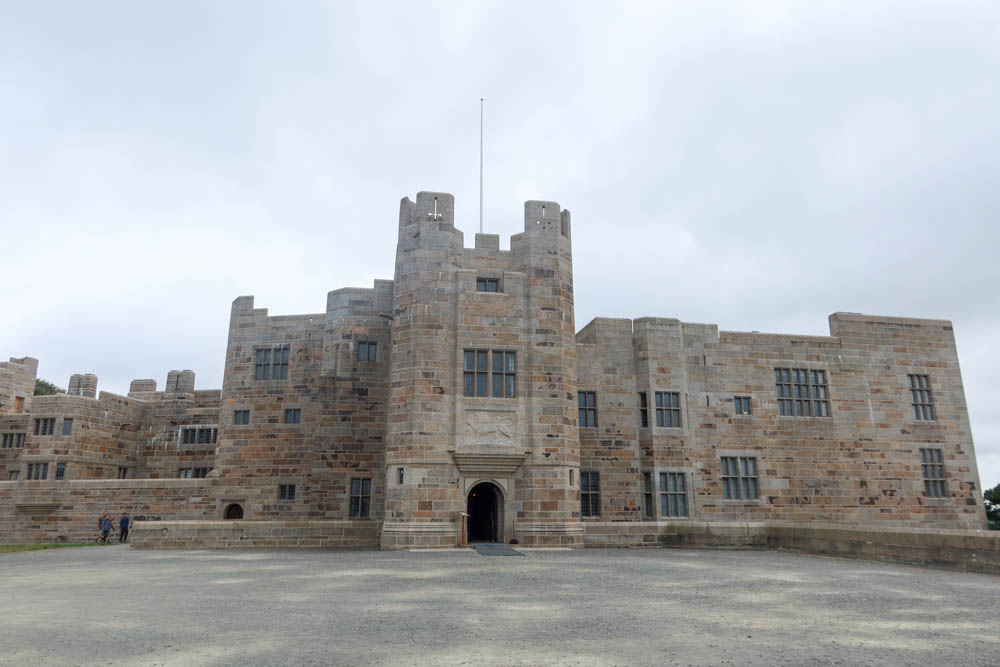
With a national trust annual membership, you can visit historic houses all over the country, including plenty in South West England.
Here are some of the things that National Trust membership includes:
- Free entry to more than 500 historic buildings, parkland and more.
- Free parking at nearly all National Trust car parks. Not all of these are by National Trust properties. Some are in other natural areas that the National Trust owns, such as Studland Bay in Dorset. You can save lots of money just by using their car parks!
- The National Trust Handbook when you sign up. This has all the information that you’ll need to plan a visit to one of their sites!
- A triannual National Trust Magazine which has news about the properties, interviews and inspiration for days out in England.
- A login to a member’s area which allows members to have first access to news about the National Trust.
- A voucher to spend in the stores or cafes.
- The opportunity to take part in the Annual General Meeting.
- Other events happening at National Trust sites – often, these are free of charge to National Trust members.
- The chance to see other places overseas.
- The knowledge that you are helping an amazing company. The National Trust do brilliant work to preserve the natural landscapes and historic properties that make up Britain. By being a member, you are giving them guaranteed income each month/ year and helping keep Britain’s history alive.
English Heritage Membership Benefits
If medieval castles and ancient ruins are your thing, consider an English Heritage membership. Here’s what you can enjoy as an English Heritage member.
- Free entry to over 400 castles and historic sites.
- Free entry for up to six kids with any adult membership.
- English Heritage Handbook each year, which has all the information that you’ll need to plan a day out at an English Heritage property.
- Free or reduced-price events. You’ll sometimes have to pay a little for events, such as the Christmas Lights at Eltham Palace or jousting at Pendennis Castle.
- A member’s e-newsletter, which you need to sign up to but which provides you with useful knowledge about English Heritage and historic England!
- Discounts at other attractions across England, like the privately owned Warwick Castle.
- Member’s-only events, where you can try immersive activities or even have private tours of the sites.
- Access the the member’s rewards section of the website, where you can get discounts at retailers or for family days out.
- Half-price entry to Cadw and Historic Scotland properties in your first year, and free entry after year one. Free entry to Ireland Heritage properties immediately. Read more about associated attractions here.
- Free parking in English Heritage car parks. These aren’t as frequent as National Trust car parks, but it is still useful to have!
- Knowledge that you’re supporting an incredible heritage that prevents places all over the country from falling into disrepair.
National Trust Membership Disadvantages
This isn’t really the National Trust’s fault, but some historic properties that you think would be part of National Trust actually aren’t. For example, Hever Castle in Kent is privately owned.
So, if you are thinking of getting a membership for a few specific properties, I would recommend confirming that they are part of the trust before buying your membership!
English Heritage Membership Disadvantages
There is sometimes an extra cost for special events, such as the Christmas Lights at Eltham Palace and jousting events at Pendennis Castle.
You also should be aware that paying for an English Heritage membership doesn’t automatically get you into historical sites in Wales and Scotland.
After one year you get free entry, but in the first year, you only get half-price entry.
This also means that your money only goes into protecting places in England!
You can get into Northern Ireland’s attractions as soon as you become a member.
National Trust Membership: How much do you save?
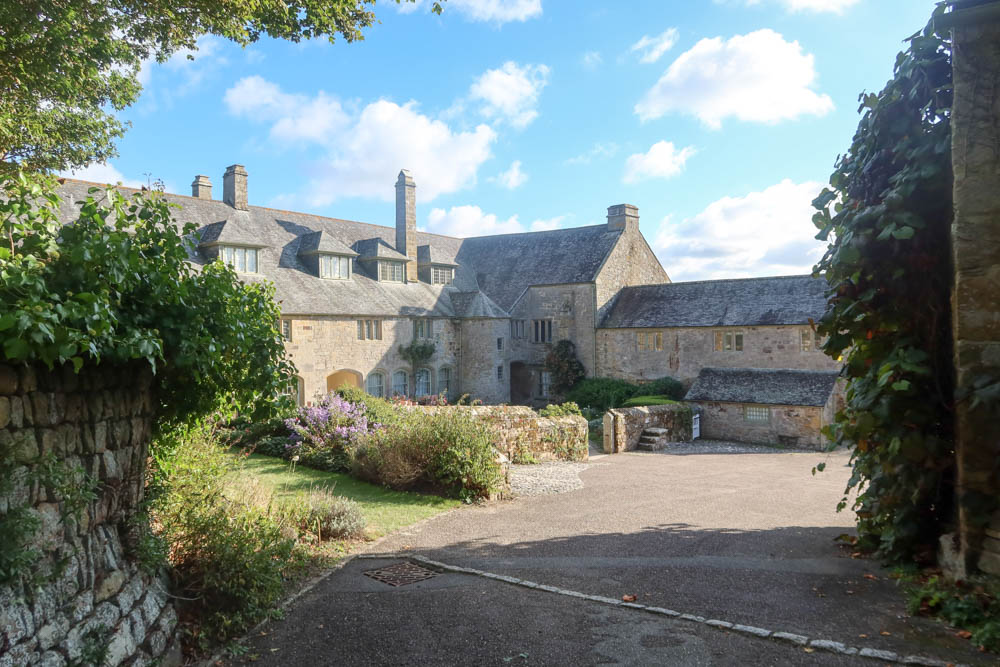
A big factor when considering National Trust vs English Heritage is how much money can you save?
Of course, it all depends on how much you visit each site.
However, here are the membership prices.
- Adult membership (aged 27+): £72 per year
- Young person membership (aged 16-25): £36 per year
- Child membership: £10 per year
- Joint membership: £120 per year
- Family membership: £126 per year for two adults, £78 per year for one adult. Family rates include one or two adults and their children or grandchildren who are aged 17 or less.
- Life membership: £1,730 for life
- Joint life membership: £2,160 for life
You can pay per year or per month by direct debit. Membership costs may change, so take a look at up to date prices here.
To give you an idea of what you can get for your money, let’s look at the adult rate of £72 per year.
- A ticket to St Michael’s Mount in Cornwall will cost you £24
- Then, if you went to Tyntesfield near Bristol, it would cost £12
- Castle Drogo in Dartmoor is £13
- You could also pop into Lydford Gorge (£6) and Buckland Abbey (£12) while in Dartmoor
- If you went back to Cornwall and visited Lanhydrock, that would be another £16
This all adds up to £83. You could visit all of these attractions in a couple of weekends, and you’d still have the whole year to make the most of the rest of your membership!
I always find that ticket prices for the trust (and heritage) to be quite pricey – but that’s because they want you to buy a membership!
English Heritage Membership: How much do you save?

Let’s do the same for English Heritage.
- Adult membership: £64 per year
- Senior membership: £57 per year
- Young adult or student membership: £51 per year
- Joint membership: £111 per year
- Family membership: £64 per year for single adult families and £111 per year for double adult families
See all membership options here
The family membership options are excellent for English Heritage. You can take up to six children with any adult member.
They don’t have to be your own kids – if, for example, you visit with a sibling and your nieces/ nephews, only your sibling will have to pay – your niece and nephew can go in for free with your membership.
Let’s look at how much a £64 per year adult membership can get you.
- If you went to Tintagel Castle, admission tickets are a whopping £14.50 per adult
- Pendennis Castle, which is also in Cornwall, is £11.50 and Launceston Castle is £5.90
- Then, say you went into Devon and went to Totnes Castle (£5.90), Dartmouth Castle (£7.90) and Okehampton Castle (£5.90)
- Plus a trip to Stonehenge in Wiltshire will set you back £19.50
You’ve easily made your money back, and you’ll likely see more than this in one year.
National Trust reciprocal arrangements
The National Trust is part of INTO, which stands for the International National Trusts Organisation.
Other INTO members are Canada, Italy, the Cayman Islands, New Zealand and Zimbabwe.
This means that you can visit heritage attractions in these countries with your National Trust membership – you don’t need to pay any more to visit them!
English Heritage reciprocal arrangements
English Heritage members have a few reciprocal arrangements with other companies.
- Cadw: EH members get half price entry in the first year and free entry from the second year.
- Heritage Scotland: Again, EH members get half price entry in the first year and free entry from the second year.
- Northern Ireland Heritage: EH members can get free entry to sites here from the first year.
- Heritage New Zealand: There is a reciprocal arrangement between English Heritage and Heritage New Zealand.
Which is best for people with different interests?
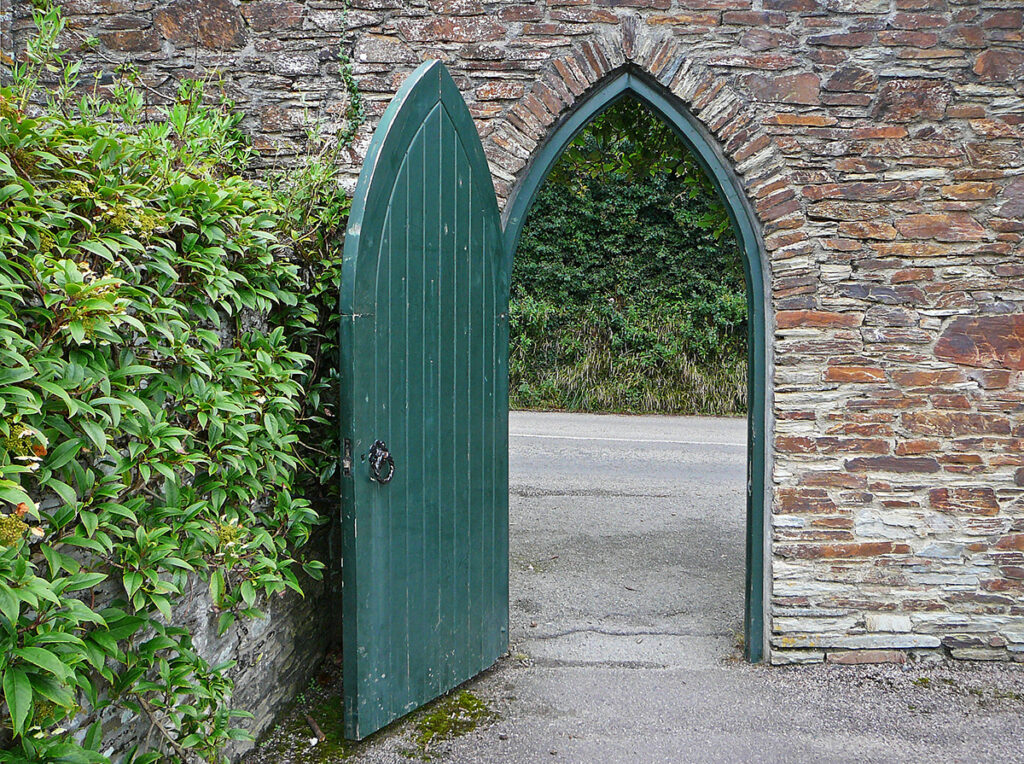
See my table or a full explanation below!
| English Heritage | National Trust | |
| History | Clear winner – the main focus of the heritage is history. | Still does very well – a lot of houses have plenty of history to learn about. |
| Nature | There is some nature around the sites, but not as much as the National Trust. | Clear winner – nature is a big part of many of the National Trust’s stately homes AND they own some epic natural areas of the UK too! |
| Families | Excellent for families with older kids, with lots of places to learn about history. Also six kids can go free with every adult member! | Lots of play areas and large grounds make National Trust a fantastic option for families with kids of all ages. |
| Couples | If you’re a couple of history lovers, you’ll love the English Heritage! Myself and my partner probably go to more English Heritage properties for this reason. | There’s so much to do at every National Trust property, with some beautiful romantic grounds perfect for strolls with your other half. |
| Activities | There are lots of activities available, although some come at an extra charge. Some of the activities are members-only and provide you with really illuminating and interesting experiences. | There are also activities on offer for the National Trust, some of which are free. They don’t have the members-only activities that are on offer at English Heritage, though! |
| Dogs | Not great – not so many attractions are dog-friendly. | Wins – many gardens are dog-friendly and have great walking opportunities. |
History
Without a doubt, English Heritage is best for history.
With epic historic castles and rugged ruins, there’s plenty to get your historical fix with an English Heritage membership.
There’s also lots of history in National Trust properties too. However, I’d say it’s more focused in English Heritage properties.
Additionally, National Trust places are more stately home style history, whereas English Heritage has more history about the ancient, medieval and Tudor eras.
Nature
National Trust definitely wins in terms of nature.
Not only do some of the National Trust properties have lots of grounds and places to enjoy nature, but the National Trust actually looks after natural areas!
However, lots of National Trust nature areas, like areas of the South West Coast Path, are completely free to get into – so don’t think that you need a membership to get your nature fix!
However, you do need a membership to access some places like Lydford Gorge.
While some English Heritage areas are in nature, it’s not the main appeal of the organisation.
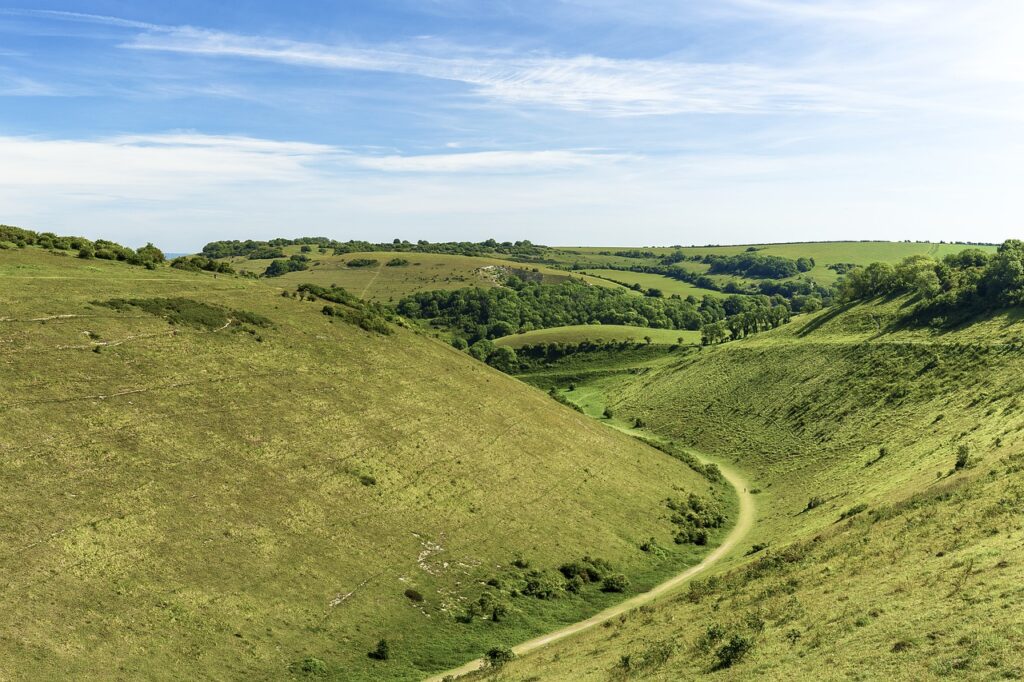
Families
With acres of parklands and plenty of play areas, the National Trust has a lot to do for smaller kids.
However, the English Heritage deal where six kids can go free with any adult is a great way to save money as a family.
Plus, older kids love exploring the castles and it’s a great way to learn!
Due to this, I’d say it’s a draw.
Couples
My partner and I probably use our English Heritage membership more, but that’s because we love history!
If you’re the kind of couple who watches documentaries about Medieval England (us) or reads lots of historical fiction (also us), you’ll love the English Heritage membership!
If you like long walks around beautiful houses, you’ll love the National Trust as a couple too. It arguably has more romantic settings, and there’s still plenty of history to enjoy.
I’d say it’s a draw, but it depends on what you like as a couple!
Activities
Both the National Trust and English Heritage has fun activities.
However, English Heritage has some excellent members-only activities where you can really get behind the scenes and learn about places much more deeply.
Dogs
National Trust is definitely better for dogs, with lots of outdoor space for them to run around in!
Not all English Heritage properties allow dogs. So I’d definitely advise National Trust if you have a four-legged friend in tow.
Can you use National Trust membership at English Heritage?
One of the most frequently asked questions about English Heritage vs National Trust Membership is:
Can I use my National Trust card at English Heritage properties?
No, you cannot, apart from very limited circumstances.
Because Stonehenge is such a famous and significant site, National Trust cardholders are permitted free entry. The same goes for parts of Hadrian’s Wall.
However, you’ll need to have two memberships or to pay for everywhere else!
Is Stonehenge National Trust or English Heritage?
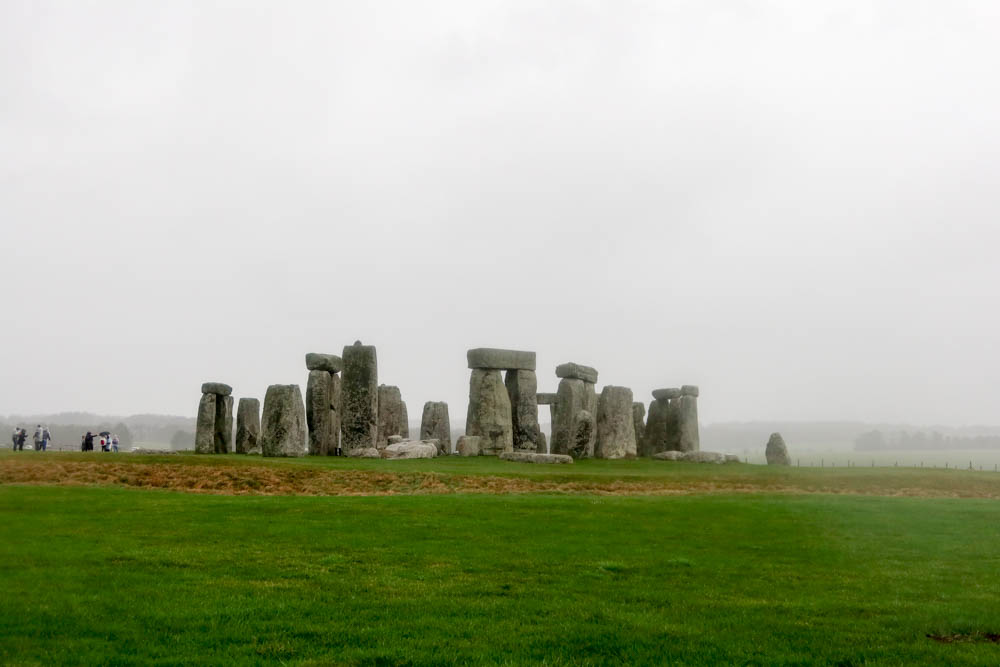
Stonehenge is English Heritage, but they do have a deal with the NT so members can use their card here for free entry.
Can I use my English Heritage or National Trust membership in Scotland, Wales and Northern Ireland?
There are a few differences to where you can use your English Heritage or National Trust membership.
English Heritage in Scotland, Wales and Northern Ireland
You can use your English Heritage membership in Ireland (Northern and the Republic) free of charge as soon as you sign up.
You can access Cadw (Wales) and Historic Scotland sites half price during your first year of membership. After a year, you can also enter these sites for free.
Additionally, you can visit Manx National Heritage attractions for free.
Here’s some more information about visiting associated attractions.
National Trust in Scotland, Wales and Northern Ireland
National Trust covers all sites in England, Wales and Northern Ireland.
Heritage sites in Scotland are looked after by Historic Scotland, which is a similar charitable trust.
However, you can still access these sites with your membership card for free.
Can I use English Heritage in Cornwall?

Yes, while the is Cornwall in England debate is very topical, as far as the English Heritage is concerned, you can use your membership card for free at attractions in Cornwall.
If you are just visiting attractions in Cornwall, you can also sign up for a cheaper Cornwall Heritage Trust pass. This costs about £15 for an adult for a year and allows you entry to Cornwall’s five paid-for English Heritage attractions.
The idea behind the pass is to appreciate Cornwall’s unique and distinctive heritage.
However, if you are already an English Heritage member you don’t need this pass – just use your English Heritage membership card for free entry.
Can I use my National Trust or English Heritage Membership in other countries?
Yes, it’s a little-known secret that you can use National Trust and English Heritage passes in limited places abroad!
The National Trust is part of INTO, the International National Trusts Organisation.
Other countries that are involved in this organisation are Italy, Canada, the Cayman Islands, Zimbabwe and New Zealand. You can read more about INTO here.
English Heritage has reciprocal agreements with Heritage New Zealand. So you can get free or discounted entry to attractions here!
Which membership is the cheapest?
There are several membership packages, but English Heritage comes out on top.
There isn’t much in it – English Heritage is £64 for a single adult for a year, whereas National Trust is £72.
Which membership is better value?
It’s hard to say, as different people will have different values for things!
I think the general consensus is that National Trust provides better value because there are more properties (which are typically bigger!) and you get a lot more parking included.
However, I think that the kids go free policy for English Heritage is excellent. Plus, we probably use our English Heritage pass more!
You can read more about this policy and other FAQs here!
Which one will help you make your money back?
Both will! Both memberships are great value for money and you can make yours back in no time. My partner and I made ours back within two months!
I wouldn’t use this as a deciding factor, because they’re both as good as each other.
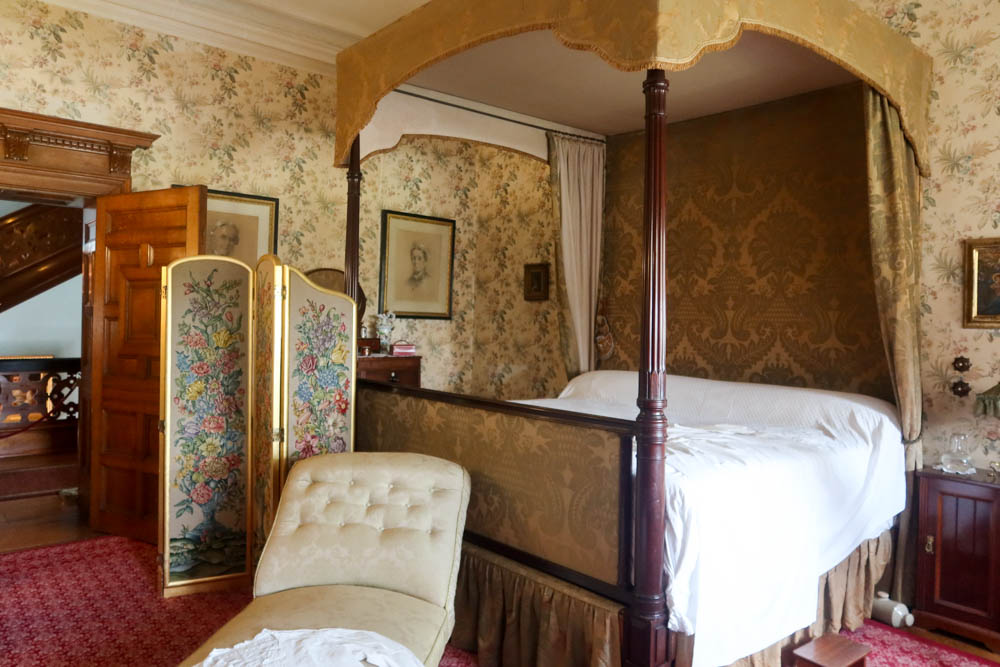
Which membership offers variety?
The National Trust potentially offers more variety.
This is because you can see historic houses, castles, palaces, parkland, nature and even coastline (entry doesn’t usually cost anything, but remember you’ll get free parking too!).
However, with English Heritage, you can see castles, ruins and ancient landmarks. So there’s still a bit of variety!
Which is best if you are from abroad?
For overseas visitors, I would recommend seeing if there are any reciprocal arrangements for the trust or heritage in your country. For example:
- If you are from Italy, you could use your Italian Heritage Trust membership to get free entry into British NT properties.
- If you are from New Zealand, you could use your Historic New Zealand pass to access EH properties.
If you are from a country that doesn’t have any reciprocal arrangements, I would say again that it depends on your tastes!
If you’re fascinated by Britain’s ancient and Medieval history, then English Heritage is for you.
If you’re more interested in huge historic houses, then National Trust membership is a great idea!
Best English Heritage Properties in South West England
Tintagel Castle

Legend has it that King Arthur was born here, which makes it one of the most spellbinding English Heritage destinations to visit.
Tintagel Castle has a long history spanning back centuries.
It was the seat of Medieval kings in the 5th to 7th century. In the 12th century, Geoffery of Monmouth wrote that King Arthur was born there, and subsequently Richard III of Cornwall decided to build a castle in Tintagel!
It’s in a breathtaking location and is one of the most popular places to visit in Cornwall.
You can read more about Tintagel Castle here.
Stonehenge

Stonehenge is one of the most world-famous prehistoric sites. People come from all over the world to see it – and it is free with your English Heritage membership!
This curious stone circle is famous as nobody really knows how it got there. It’s a wonderful sight to behold and is a fascinating attraction that’s well worth visiting.
Click here to read more about Stonehenge.
You can also get in free to Stonehenge with your National Trust membership.
Pendennis Castle
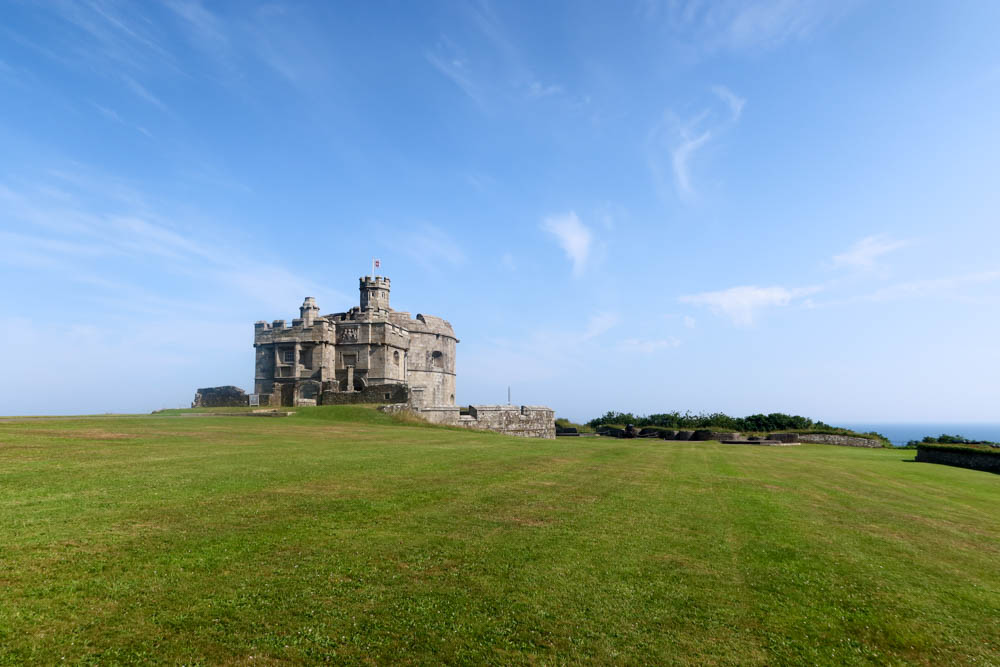
Pendennis Castle was one of Henry VIII’s coastal fortifications.
He created it in the 16th century, to defend the Cornish coast against potential French and Spanish invasions.
The castle then played an important role again in World Wars One and Two.
Read more about Pendennis Castle here.
Best National Trust Properties in South West England
St Michael’s Mount

St Michael’s Mount is one of the biggest and most extensive attractions in the UK.
It’s also one of the priciest – which is where your membership can come in handy!
With a dramatic castle on an island overlooking the sea, it’s a wonderful place to visit.
You’ll find step into fascinating history indoors and enjoy manicured gardens and beautiful grounds outside.
You can read more about St Michael’s Mount here.
Lanhydrock

Lanhydrock is a wonderful stately home in Cornwall, and it’s one of the best things to do near Bodmin.
It’s one of the most extensive in the region, which makes it a fantastic place to learn about Victorian life.
The house was destroyed in a fire in 1881, so the features that you see now is from the Victorian/ Early Georgian period. Very Downtown Abbey!
Plus, there are chances to see the servant’s kitchens and the elaborate stately rooms.
A La Ronde
A La Ronde is a 16 sided house in Exmouth, Devon.
It is one of the most unique National Trust properties.
Built by two spinsters, it is full of their collected items from all around the world. You’ve got to see it to believe it – but it’s a sight worth seeing!
Lydford Gorge

Lydford Gorge is a fantastic example of some of the epic natural attractions that the National Trust owns.
The gorge is a temperate rainforest on the edge of Dartmoor National Park.
There’s a lovely walk around the gorge, where you can take in some beautiful nature.
It normally costs £6 just to enter the gorge, but of course, with your National Trust membership, it’s free.
Is it worth having both memberships?
Yes, there is very little property crossover and if you are an individual, couple or family who loves getting out and about and exploring historic England, Scotland, Wales or Northern Ireland, then it’s absolutely worth getting both memberships!
Myself and my partner have a joint membership for both charitable trusts.
It cost us a less than £250 per year (for both of us) and we utilise so many perks, including visiting popular sites (many of which I write about on this blog!), long country walks, free parking, discounts at some stores and getting out and doing things more often.
If you’re living or travelling around the UK and can afford to, I think getting both English Heritage and National Trust memberships is a fantastic idea.
However, I fully appreciate that this isn’t affordable for everybody, and some people want to just purchase one membership to see how much they use it. That’s completely understandable!
Who English Heritage is best for
English Heritage is best for history buffs who want unlimited access to some of the country’s most fascinating places.
I think that English Heritage is also great for families with older kids who love learning in interactive ways. With an English Heritage membership, you can learn about medieval kings one day and coastal defences in World War Two the next!
English Heritage is also slightly cheaper and they often have excellent deals running. For example, when we signed up, we got 15 months for the price of 12.
English Heritage regularly sends me discounts for my readers, and whenever I have a discount code I include it in my newsletter.
Sign up to be the first to learn about them (and for lots of travel tips about South West England!).
Who National Trust is best for
National Trust is best for families with younger children, as they often have more in the way of play areas and grounds to explore.
There’s also plenty of history at National Trust sites, so history lovers won’t be disappointed.
This trust focuses more on stately homes, whereas English Heritage has more ancient monuments.
If you frequently go hiking, you can also park in National Trust car parks.
What to ask yourself when deciding whether to get an English Heritage or National Trust membership
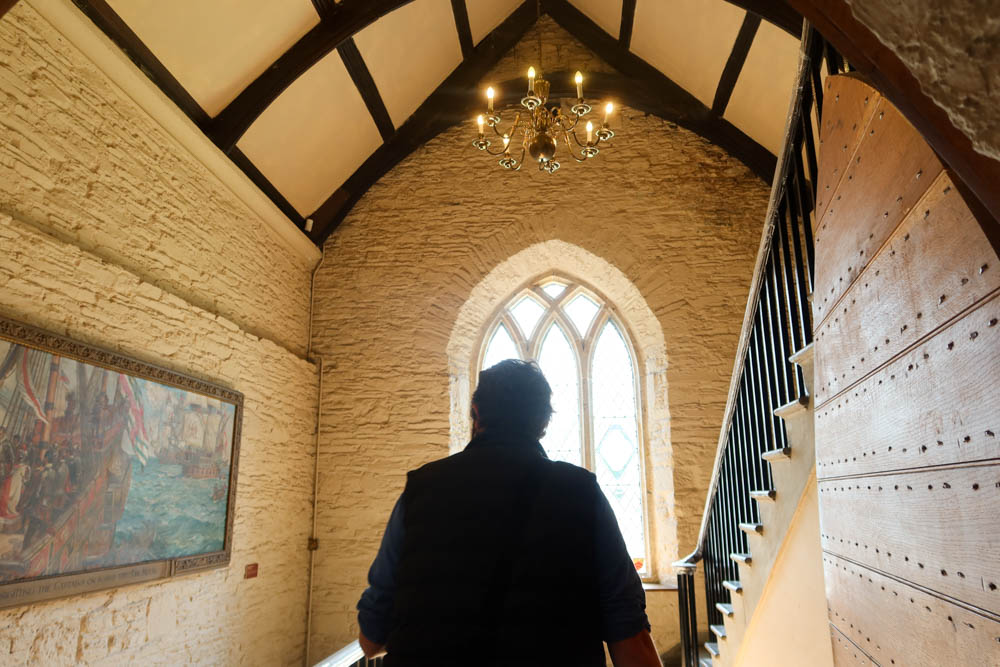
Here are some questions to ask yourself when contemplating between the two:
- What are my primary interests?
- What are the main attractions around me, or in places I go on holiday? Are there more English Heritage or National Trust places?
- Do I have money constraints?
- Do I want to get involved in extra activities?
English Heritage vs National Trust: Which is best?
I hope that this article has given you an insight into which to choose – English Heritage or National Trust.
I don’t think that there is a clear winner. I think they have different purposes and, if you explore the UK a lot and have the funds to, both memberships could be beneficial.
However, if you only want to commit to one right now, I hope that this post has given you an insight into which might be best for you!




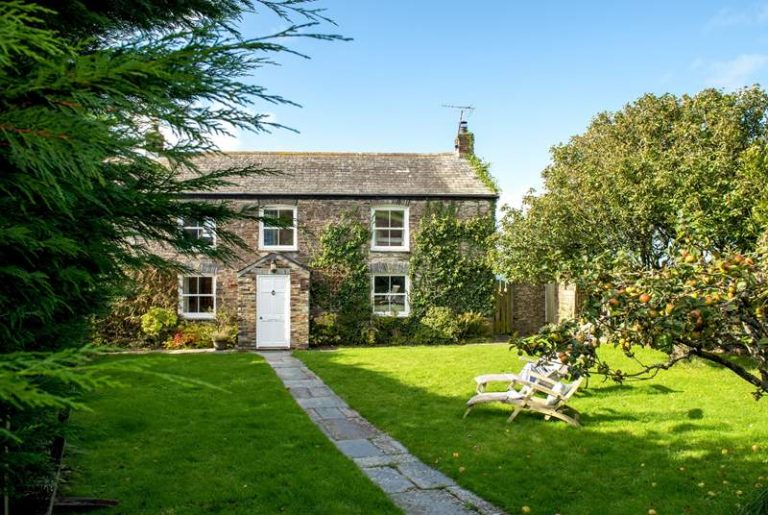
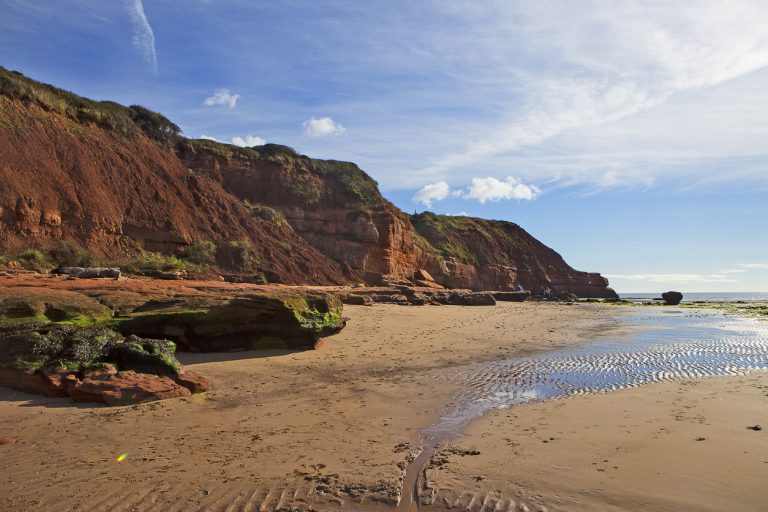
We are from Holland en will go to England 26 august, at the end of next week however.
We heard , that membership also makes campingsites (we are traveling with a small motorhome) more payeble. Is that treu or is that an other kind of membership?
Thanks, Carla
I don’t think that there is a campsite membership unfortunately!